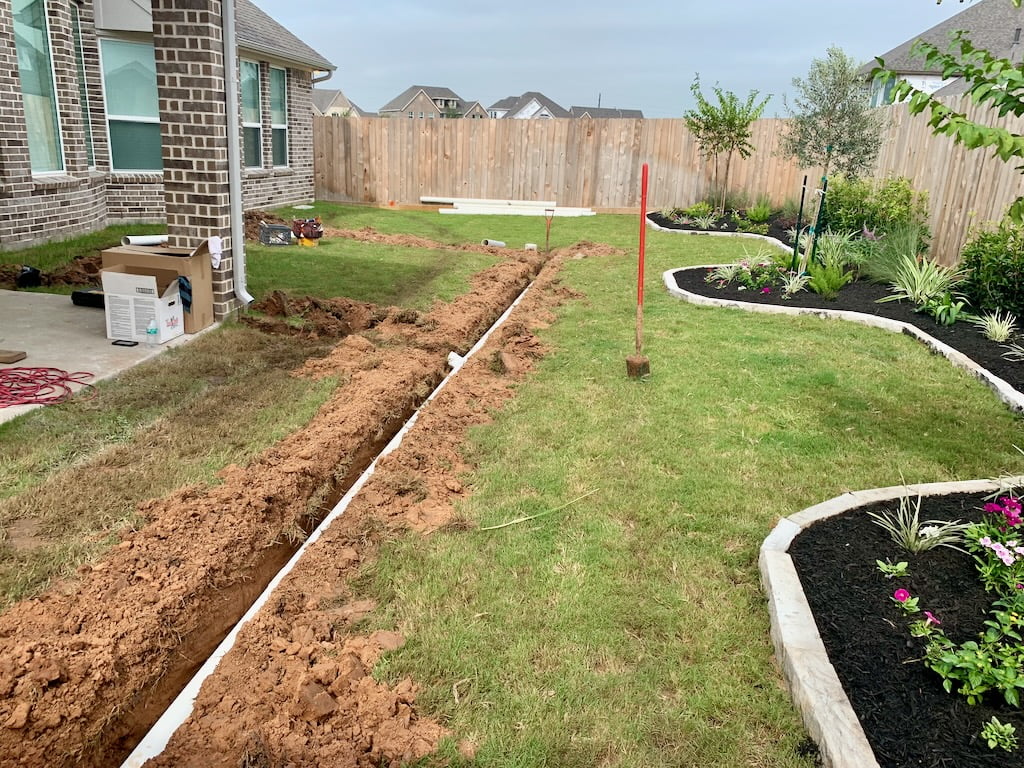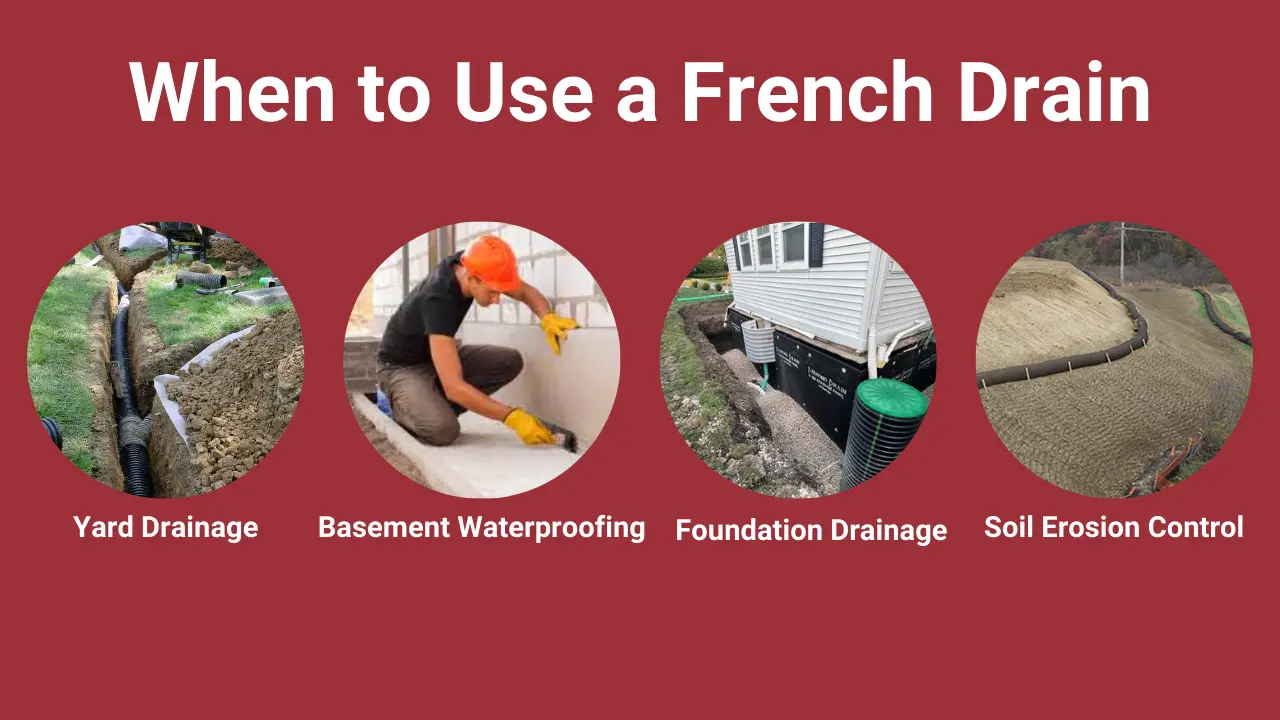Top Benefits of Installing a Portland French Drain Beside Your Property
Top Benefits of Installing a Portland French Drain Beside Your Property
Blog Article
The Vital Guide to Preserving Your French Drain for Lasting Performance
Preserving your French drain is key to its efficiency and your property's protection. Regular checks can save you from costly repairs and water damages. You'll wish to know what indicators to seek and how frequently to examine your system. Plus, recognizing the cleansing procedure can make a substantial distinction. Let's explore the important steps for ensuring your drainpipe functions well for years ahead.
Recognizing the Function of a French Drain
A French drain is an important element in handling water around your home. It guides excess water away from your foundation, stopping flooding and damage. When heavy rain drops, the drain collects water via a perforated pipe hidden in gravel. This system allows water to move easily, lowering stress on your basement wall surfaces and reducing the risk of leaks.You may wonder just how it functions in practice. As water fills the soil, gravity draws it toward the drainpipe. The perforated pipeline captures this water, carrying it to a designated water drainage location or storm sewage system. This process keeps your backyard completely dry and protects your home's architectural integrity.Understanding just how a French drain features is essential to appreciating its value. By properly channeling water away, it aids preserve a secure and dry living setting. Keeping your French drainpipe in top condition assurances you stay clear of costly repair services down the line.
Regular Assessments: What to Look For
When you're checking your French drainpipe, start by examining for any blockages that may be obstructing water circulation. Take notice of indications of surface area disintegration around the drain, as this can show potential problems. Regular analyses will certainly help keep your drainage system operating effectively.
Obstructed Drainpipe Analysis
How can you tell if your French drain is clogged? Watch for water merging in your lawn, particularly after heavy rain. If you observe locations where water gathers rather of draining, that's a red flag. You ought to additionally examine the drain outlet; if water isn't draining as it should, there's likely a clog. Pay attention for uncommon gurgling noises, which can indicate trapped air. In addition, evaluate the drain's surface area for any greenery development, as origins can clog the system and penetrate. If you smell moldy odors, it can aim to stagnant water caused by a clog. Consistently reviewing these indicators can aid you keep your French drain efficiently and protect against expensive repair services.
Surface Disintegration Inspect

Cleansing Your French Drain: Step-by-Step Overview
Cleaning your French drainpipe is vital for maintaining it working properly. You'll require some particular devices and a clear process to assure whatever runs smoothly. Allow's go through the steps and pointers for preserving your drain effectively.
Tools You'll Require
To tackle the job of cleansing your French drain successfully, you'll intend to collect a few essential devices. First, grab a durable pair of handwear covers to secure your hands from debris and sharp objects. A small shovel or trowel will help you get rid of dirt or blockages around the drain. For cleaning out the interior, a plumber's snake or a high-pressure water nozzle can be extremely beneficial. You'll additionally require a container for gathering any type of debris you take out. Having a yard tube on hand will certainly make it much easier to rinse out the drain and guarantee it's moving efficiently. With these devices prepared, you'll be set for a thorough cleansing session!
Cleansing Refine Steps
Start by assessing the area around your French drain for any noticeable debris or obstructions. Remove leaves, branches, or dirt that may block water circulation. Next off, check the inlet and electrical outlet locations; clear any type of blockages to ensure proper drainage. Utilize a garden tube to flush the drain, routing water into the inlet. This aids remove any gathered sludge or sediment. Take into consideration utilizing a plumbing's serpent to break them up if you notice consistent blockages. After cleansing, check the gravel around the drainpipe; replenish it if it's gotten rid of. Validate the drain covers are intact and firmly in place to stop particles from going into. Normal cleaning keeps your French drainpipe functioning successfully.
Upkeep Frequency Tips
While routine maintenance is vital for your French drainpipe's longevity, understanding just how frequently to keep it can make all the difference. Ideally, you need to inspect your French drain a minimum of twice a year, preferably in spring and autumn. After hefty rains or snowmelt, check for obstructions or particles. If you notice any type of standing water, it's time to clean your drain.In areas with hefty foliage, more constant upkeep-- regarding every three months-- may be essential. Additionally, take into consideration cleaning your French drain after significant storms or if you observe water pooling in your backyard. By staying aggressive, you'll assure your French drain features properly and safeguards your building from water damage. Normal checks will conserve you money and time in the future.
Identifying Common Issues and Their Solutions
When you discover water merging in your lawn or damp places in your cellar, it's vital to identify usual concerns with your French drainpipe and apply reliable remedies. One constant trouble is clogging, commonly caused by debris like leaves or debris. To repair this, you can utilize a plumbing snake or a high-pressure water jet to clear blockages.Another issue might be improper slope. If your drainpipe isn't sloped appropriately, water won't flow away from your home. You can change the incline by digging and repositioning the drainpipe pipe.Lastly, check for damage or splits in the drainpipe itself. Replacing the damaged areas is important for peak performance if you find any type of. By resolving these issues without delay, you'll assist guarantee that your French drainpipe continues to function successfully, safeguarding your building from water damages and maintaining a completely dry, secure environment.
Seasonal Maintenance Tips for Your French Drain
Dealing with typical issues with your French drainpipe is just the initial step in assuring its long-lasting effectiveness. Seasonal upkeep is vital for peak performance. In the springtime, clear away leaves and particles that might have built up throughout wintertime. Inspect for any next page kind of blockages in the outlet or catch basin, as water requires a clear course to flow freely.During summer, examine your drainpipe for any kind of signs of resolving or shifting dirt. Ensure it's still level and working effectively. As fall techniques, clean any fallen delegates protect against clogs prior to winter months arrives.In winter, look for freezing temperature levels. Make sure your drainpipe isn't at threat of cold if you live in a cold climate. Shielding subjected pipelines can aid. Regular checks and timely upkeep can avoid pricey repair work and keep your French drain working effectively year-round. Stay positive and take pleasure in comfort recognizing your drainage system is in good condition!
When to Call a Professional
Knowing when to employ a professional can save you time and avoid additional damage to your French drainpipe. It's a clear indicator that your drain might be blocked or harmed if you see persistent standing water in your yard. Don't neglect odd smells, as they can suggest sewer backup or degeneration, which calls for immediate attention.If you locate that your drainpipe isn't functioning properly after efforts to clean or keep it, it's time to get to out for expert aid. Furthermore, if you're unsure concerning the underlying issues or do not have the required devices, employing a professional can give peace of mind.Finally, if your French drainpipe is old or has experienced significant damage, specialist assessment can determine whether fixings or total replacement is required. Trust fund the specialists to assure your drainage system functions successfully for years ahead.
Tips for Avoiding Future Water Drainage Issues
To maintain your French drain working successfully, on a regular basis examining and preserving it can make all the distinction. Begin by getting rid of debris, leaves, and dirt from the surface area and drain openings. This stops clogs that can lead to water back-up. Inspect the crushed rock around the drain; if it's compacted or worn down, take into consideration adding fresh gravel to preserve excellent flow.Next, divert water away from your drain by making certain gutters and downspouts are clear and guiding water at the very least 3 feet far from your foundation. Routinely examine for any kind of signs of damage or drooping. If you discover concerns, resolve them immediately.Finally, think about installing a filter or a catch container to trap larger particles prior to it enters the drainpipe. By remaining aggressive with these tips, you'll minimize the risk of future drain issues and keep your French drain in top shape.
Frequently Asked Concerns
The length of time Does a French Drain Generally Last?
A French drain usually lasts around 30 to 40 years, depending upon the materials utilized and maintenance (Portland French Drain). If you keep up with regular checks, you can expand its life-span also better
Can I Set Up a French Drainpipe Myself?
Yes, you can set up a French drain yourself if you've obtained the right devices and expertise. Simply go to this web-site ensure to intend thoroughly, comply with regional guidelines, and assurance appropriate drainage to prevent future problems.
What Products Are Utilized in a French Drainpipe?
You'll need perforated pipeline, gravel, landscape textile, and a strong drainage pipe for your French drain. These materials help reroute water successfully, stopping flooding and keeping your home completely dry and secure from water damages.

Is a License Required to Mount a French Drainpipe?
You'll likely require a permit to set up a French drainpipe, depending upon neighborhood laws. Check with your town to ensure you conform with any required guidelines and prevent prospective problems during installation.
What Are the Costs Associated With French Drainpipe Upkeep?
Keeping a French drainpipe typically costs between $100 and $500 every year. You'll require to take right into account expenditures for cleaning, repair work, and examinations. Routine maintenance assists protect against larger assurances and expenses your system functions properly for several years - Portland French Drain. When you're evaluating your French drainpipe, begin by examining for any blockages that may be obstructing water flow. By remaining positive, you'll guarantee your French drainpipe functions effectively and shields your building from water damages. When you notice water merging in your yard or damp areas in your basement, it's crucial to determine usual problems with your French drainpipe and execute reliable options. You can adjust the incline by digging and rearranging the drain pipe.Lastly, check for damages or cracks in the drainpipe itself. Check the crushed rock around the drain; if it's compressed or worn down, consider adding fresh crushed rock to maintain excellent flow.Next, divert water away from your drainpipe by guaranteeing downspouts and rain gutters are clear and routing water look these up at least three feet away from your structure
Report this page